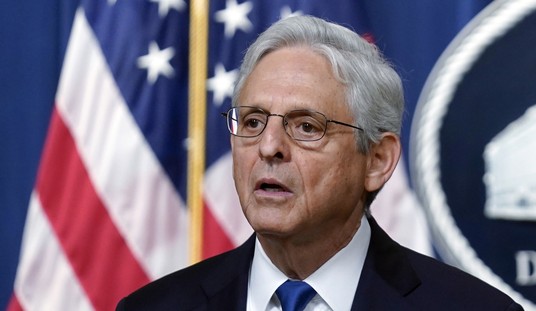Back in 2002, Terry Teachout explored America’s mid-century Middlebrow Culture, which arrived a few years after World War II and was essentially left for dead once the punitive New Left arrived to make a hash of LBJ’s self-described Great Society:
I grew up in the Age of the Middlebrow, that earnest, self-improving fellow who watched prime-time documentaries and read the Book of the Month. That was me, in spades. I was born in a small Missouri town in 1956, the year Dwight Eisenhower was re-elected by a landslide, and as far back as I can remember, I was eager to learn what was going on beyond the city limits of that small town, out in the great world of art and culture. Not that we were hopelessly at sea–we had a Little Theater and a Community Concerts series–but my home was hundreds of miles from the nearest museum, and it wasn’t until I went to college that I saw my first live performance of a ballet. Nevertheless, I already knew a little something about people like Willem de Kooning and Jerome Robbins, thanks to Time and Life magazines and The Ed Sullivan Show, and what little I knew made me want to know more.
Ours is essentially a popular culture, of course, but in the democratic culture of postwar America, there was also unfettered access to what Matthew Arnold so famously called “the best that has been thought and said in the world”–and, just as important, there was no contempt for it. When I was a boy, most Americans who didn’t care for high art still held it in a kind of puzzled respect. I doubt that Ed Sullivan cared much for Maria Callas or Edward Villella, but that didn’t stop him from putting them on his show, along with Louis Armstrong and the original cast of West Side Story (not to mention Jackie Mason and Senor Wences). In the Sixties, all was grist for the middlebrow mill.
Just as city dwellers can’t understand what it meant for the residents of a rural town to wake up one day and find themselves within driving distance of a Wal-Mart, so are they incapable of properly appreciating the true significance of middlebrow culture. For all its flaws, it nurtured at least two generations’ worth of Americans who, like me, went on to become full-fledged highbrows–but highbrows who, while accepting the existence of a hierarchy of values in art, never lost sight of the value of popular culture.
In her first article for Bloomberg News, Virginia Postrel describes Oprah Winfrey’s now-retired show as carrying on in that middlebrow tradition, and places it into a seemingly unlikely cultural trio that arrived near-simultaneously in the mid-1980s, alongside snarky, cynical Spy magazine and the American Girl dolls and their accompanying line of books:
Over the past 25 years, almost 20 million American Girl dolls, which retail for about $100 each, and more than 135 million American Girl books have been sold. In 1998, Mattel acquired the company for $700 million. Publisher’s Weekly calls it a “publishing powerhouse.”Every resourceful, ambitious, empathetic American Girl would be right at home on “The Oprah Winfrey Show” — where, in fact, the dolls all appeared during a 2007 episode. “I love the stories of inspiration and how the dolls overcame obstacles and the girls were smart and creative and resourceful and clever,” said a mother. As Winfrey went behind the scenes at American Girl headquarters, a marketing executive assured moms at home that “there are enormously powerful life lessons and stories that are embedded in these innocent little books.”
Smart-Girl Culture
The books teach girls to stand up for what they believe, to help friends in trouble, to treat everyone with compassion and respect, to study and learn, and to take initiative. If these lessons sound like nothing new, that’s the point. American Girl is the late-20th-century manifestation of smart-girl culture. It’s the racially sensitive, environmentally conscious, post- feminist successor to Louisa May Alcott and Nancy Drew. (Molly, the World War II–era character, reads Nancy Drew books and even solves a mystery of her own.) Like Oprah, American Girl is earnest, old-fashioned and fantastically successful.
Limits of Optimism
It’s also fiction designed for children. And therein lies the problem with middlebrow self-improvement, Oprah-style. Yes, compared to the vicious negativity of Spy, Winfrey’s relentless optimism — her affirmation that every person and every situation can be redeemed — is refreshing. But you don’t have to be a snarky cynic to recognize its limits. Should we really find Elie Wiesel’s bleak “Night” an uplifting read? Treat Auschwitz as a learning experience? Seriously?
Oprah-ism doesn’t foster nuance or critical thinking. Yet even at its most philosophically ridiculous, it does manifest a singular, and characteristically American, virtue: It moves forward. The past, it affirms, is over and cannot be changed. What matters now is what happens next.
But that makes Oprah a champion not of middlebrow culture, which gave millions of ordinary Americans access to Culture with a Capital-C, but what Mark Steyn described in 2007 as “Present-Tense Culture:”
I don’t really like the expression “popular culture.” It’s just “culture” now: there is no other. “High culture” is high mainly in the sense we keep it in the attic and dust it off and bring it downstairs every now and then. But don’t worry, not too often. “Classical music,” wrote Bloom, “is now a special taste, like Greek language or pre-Columbian archaeology. Thirty years ago [i.e., now fifty years ago], most middle-class families made some of the old European music a part of the home, partly because they liked it, partly because they thought it was good for the kids.” Not anymore. If you’d switched on TV at the stroke of midnight on December 31, 1999 you’d have seen President and Mrs. Clinton and the massed ranks of American dignitaries ushering in the so-called new millennium to the strains of Tom Jones singing “I’m gonna wait till the midnight hour/ That’s when my love comes tumblin’ down.” Say what you like about JFK, but at least Mrs. Kennedy would have booked a cellist.
“Popular culture” is more accurately a “present-tense culture”: You’re celebrating the millennium but you can barely conceive of anything before the mid-1960s. We’re at school longer than any society in human history, entering kindergarten at four or five and leaving college the best part of a quarter-century later—or thirty years later in Germany. Yet in all those decades we exist in the din of the present. A classical education considers society as a kind of iceberg, and teaches you the seven-eighths below the surface. Today, we live on the top eighth bobbing around in the flotsam and jetsam of the here and now. And, without the seven-eighths under the water, what’s left on the surface gets thinner and thinner.
And you reach a point where it becomes impossible to discern good culture from trash, as Steyn noted 13 years ago in his profile of Oprah, republished this week at National Review Online:
Perhaps no one sums up the deficiencies of the form better than the woman who started it. Oprah has been speaking for a living since she got her first gig in radio when she was still in high school; she has been speaking in public since the age of three, when she gave a talk at the Baptist church in Kosciusko, Mississippi, called “Jesus Rose on Easter Day.” The other kids nicknamed her “Miss Jesus” and “The Preacher.” But what exactly is she preaching? Like most showbiz personalities, she prefers the comforting vagaries of New Age spiritualism to the stricter confines of organized religion. “I went through a spiritual period in the early Eighties,” she said, and, after The Color Purple, began buying up the film rights to various feel-good books. She was especially frustrated at being outbid on The Education of Little Tree, the reminiscences of a Cherokee boy. “It was a spiritual little book,” she said. “I read it sitting on the porch of my farm in Indiana. Thought the trees were talking to me, too.” Unfortunately, the author subsequently turned out to be not a Cherokee but a Klansman, Forrest Carter, the fellow who wrote George Wallace’s “segregation forever” speech.
You’d have to have a heart of stone not to weep with laughter at that: the Oprahfier Oprahfied. Does it really matter whether the guy’s a Cherokee or a Klansman as long as he can fake the generic maudlin mush beloved of Oprah’s viewers?
There’s no doubt that middle America much prefers the calming tones of Oprah than the coastal elitist snark of the now defunct Spy magazine. And as Postrel notes in her essay, she should be praised for moving away from the trash talk of the Jerry Springer brand of daytime TV. But it’s hard to square Oprah’s white light and present-tense culture with the middlebrow culture that preceded it, and was largely dead and buried by the time Oprah went on the air.
It’s a fascinating experiment to attempt to square Oprah’s mid-’80s business ambitions with her 21st century political goals. As Postrel notes in her article:
Winfrey was one of [Spy] magazine’s earliest targets [in the mid-1980s]. A profile in Spy’s third issue mocked her weight, her “poodlish starlet’s existence,” her exuberance and her frank yearning to be rich and famous. Calling her a “binge dreamer,” author Bill Zehme compared her to the delusional, self-dramatizing Norma Desmond of “Sunset Boulevard.”
Creating a Mogul
This young woman, “capaciously built, black and extremely noisy,” had actually told him, “I certainly intend to be the richest black woman in America. I intend to be a mogul.” She thought she had “a higher calling” and deemed herself “profoundly effective.” She owned multiple fur coats and an $800,000 high-rise condo. Her crassness was surpassed only by her absurdity.
But as Postrel notes, the hard-driving entrepreneurial Oprah achieved her mogul status and then some. Curious though, that in 2008, she backed a president who, if you believe his rhetoric, finds that sort of business acumen anathema, and has done his best to punish business and wealth creation, both small and large. Or as Kathy Shaidle quipped when President Obama had his “I do think at a certain point you’ve made enough money” Kinsley-esque gaffe a year ago, “So, who wants to be the first one to tell Oprah?”
But then, once you’ve reached the top as Oprah did, why would you make it easier for the little people in your audience to get there as well? In that sense, she’s very much inline with, not just the rest of Spy magazine’s targets, but the punitive worldview of the magazine’s editors and publishers as well.










Join the conversation as a VIP Member